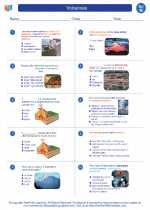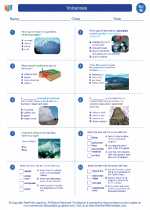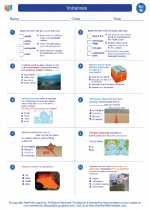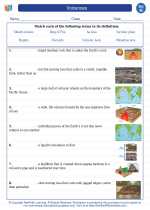Crystallization
Crystallization is the process of forming a solid material from a liquid or gas, in which the atoms or molecules are arranged in a highly ordered, repeating pattern extending in all three spatial dimensions. This process is commonly used in chemistry to purify substances or to produce crystals for various uses, such as in the production of pharmaceuticals, food processing, and materials science.
Key Concepts
- Solute and Solvent: In the process of crystallization, a solute (the substance being dissolved) is dissolved in a solvent (the liquid in which the solute is dissolved).
- Saturation: When the solution contains as much of the solute as it can dissolve at a particular temperature, it is said to be saturated.
- Nucleation: This is the initial formation of a crystal from a solution, which can be spontaneous or induced by adding a seed crystal or scratching the container.
- Crystal Growth: Once nucleation occurs, the crystals continue to grow as more solute molecules or atoms join the crystal lattice.
- Crystalline Structure: Crystals have a specific, ordered arrangement of atoms or molecules, which gives them their characteristic shape and properties.
Process of Crystallization
The process of crystallization typically involves the following steps:
- Dissolving the Solute: The solute is dissolved in the solvent to create a solution.
- Saturation: The solution is heated or allowed to cool to reach a saturated state, where no more solute can dissolve.
- Nucleation: The first crystals begin to form as the solution becomes supersaturated.
- Crystal Growth: The crystals continue to grow as more solute molecules join the crystal lattice.
- Separation: The solid crystals are separated from the remaining liquid using techniques such as filtration or centrifugation.
- Drying: The collected crystals may be washed and dried to obtain the pure crystalline product.
Applications of Crystallization
Crystallization is widely used in various fields, including:
- Pharmaceutical industry for purifying drugs and producing pharmaceutical compounds
- Food industry for refining sugar, salt, and producing crystalline products such as chocolate
- Chemical industry for separating and purifying chemical compounds
- Materials science for producing semiconductor crystals and single crystals for electronics
Study Guide
When studying crystallization, it is important to focus on the following key points:
- Understand the difference between solute and solvent, and how they interact in the process.
- Learn the factors that affect the rate of crystallization, such as temperature, concentration, and impurities.
- Study the various techniques used to induce nucleation and promote crystal growth.
- Explore the applications of crystallization in different industries and its importance in producing pure substances.
- Practice problems related to calculating solubility, saturation, and yield of crystallization processes.
By mastering these concepts and principles, you will gain a solid understanding of crystallization and its significance in the field of chemistry.
[Crystallization] Related Worksheets and Study Guides:
.◂Science Worksheets and Study Guides Eighth Grade. Volcanoes

 Worksheet/Answer key
Worksheet/Answer key
 Worksheet/Answer key
Worksheet/Answer key
 Vocabulary/Answer key
Vocabulary/Answer key
 Vocabulary/Answer key
Vocabulary/Answer key
 Vocabulary/Answer key
Vocabulary/Answer key
